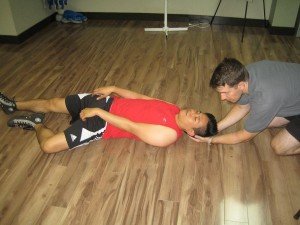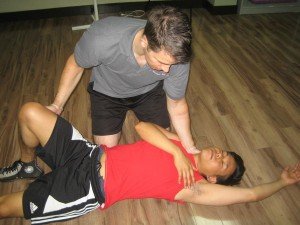Heart to heart on cardiac disease

Over 600,000 men and women in America die each year from heart disease. Though its risks are mainly lifestyle-related, it still remains the number one killer of people world wide. The WHO and CDC has actually reported a decrease in cases by as much as 30 percent between 2000 and 2010 but the numbers are still very high for a condition that is easily preventable.
Morbidity rates for cardiovascular disease (CVD) are still increasingly high, with 26.6 million non-institutionalized Americans living with CVD. That is more than 11 percent of American adults older than 18 years old. These numbers only represent Americans who are diagnosed. Possibly millions more are living with undiagnosed CVD. Because of this, approximately 30,000 events of OHCA happen annually in the United States.
The role of CPR
Cardiopulmonary resuscitation remains the gold standard of cardiac arrest management. Whether the arrest happens in or out of the hospital, chest compressions will always be the first reaction to restarting a stopped heart. Addressing cardiac arrest in adults and children uses the same principles but there are certain differences.
Chest compression rate is 100 per minute, using a compression:ventilation ratio of 30:2, for both children and adults. When it comes depth, there is a slight difference of half an inch between adult and infant compressions, 2 inches for adults and 1.5 inches for infants and toddlers. These compressions are given to the center of the chest, pressing hard and fast while allowing for chest recoil.
Basic Life Support training

BLS training is available in three of our training programs and one re-certification class. These programs last for roughly four hours, shorter than our advanced courses for health care professionals which run over two days. We only have one program for the general public, the other two are for health care providers.
- Basic CPR and AED training (with first aid) / Heartsaver – This program teaches one-rescuer CPR to the public, focused on the three basic skills. 4 hrs.
- Basic CPR and AED training (with first aid) / Heartsaver C – This program covers the same topics as Heartsaver but tailors the lessons for health care providers. 4.5 hrs.
- Basic Life Support for Health Care Providers – This program teaches one and two-rescuer CPR to HCPs. 4.5 hrs. (re-certification 4 hrs.)
Certification is available for all three programs, valid for 24 months before it needs to be renewed. Renewal is offered through our re-certification classes, but only three of our programs (one BLS course) have accompanying re-certification. There no requirements for applying to a Basic Life Support program, just completely attendance and passing the certification exam once the program is completed.
Note: In the case that your certificate has expired before you had a chance to renew it, we will require to take the training program (not the re-certification class) again.
Enroll in BLS training with us today!